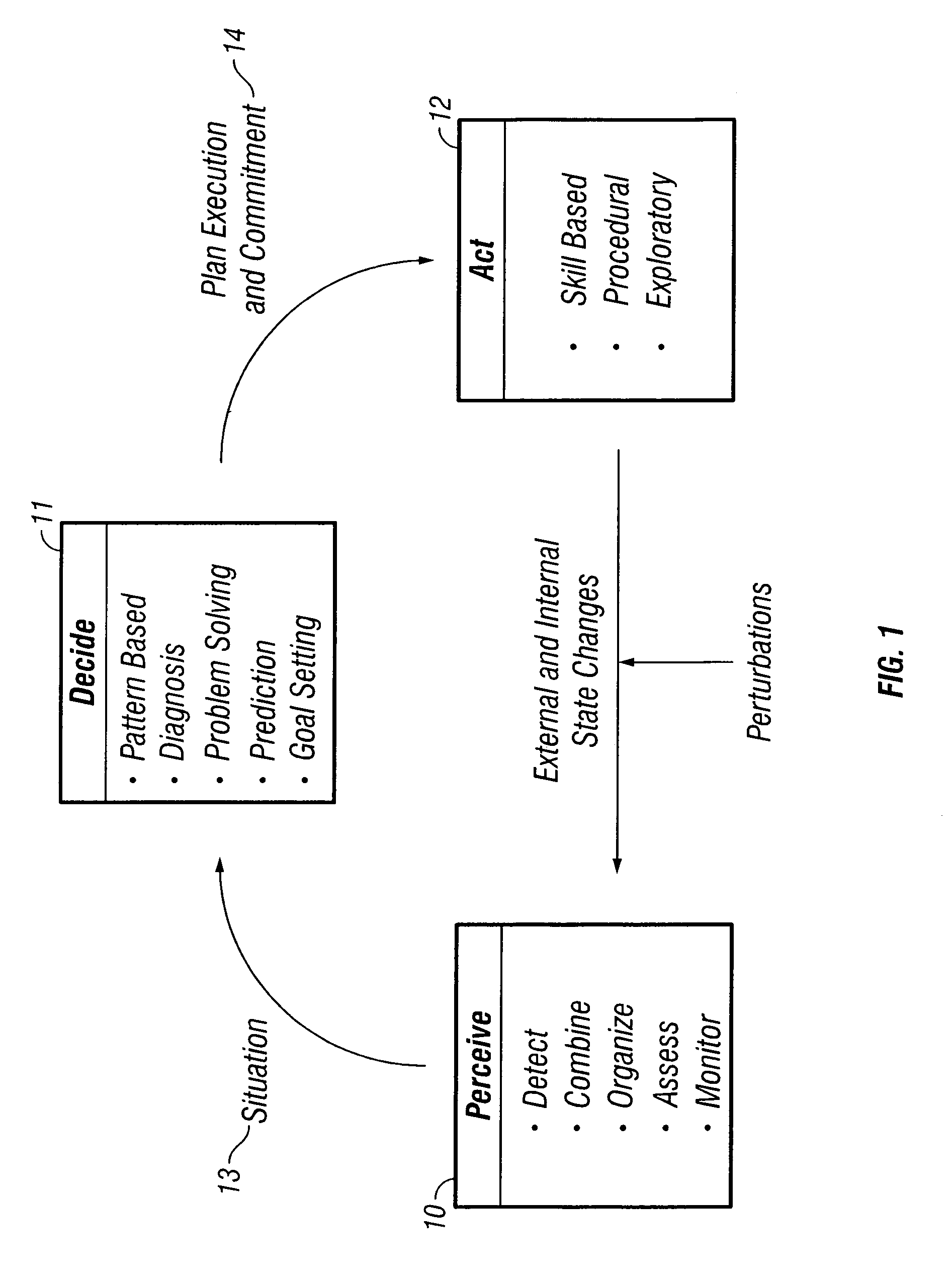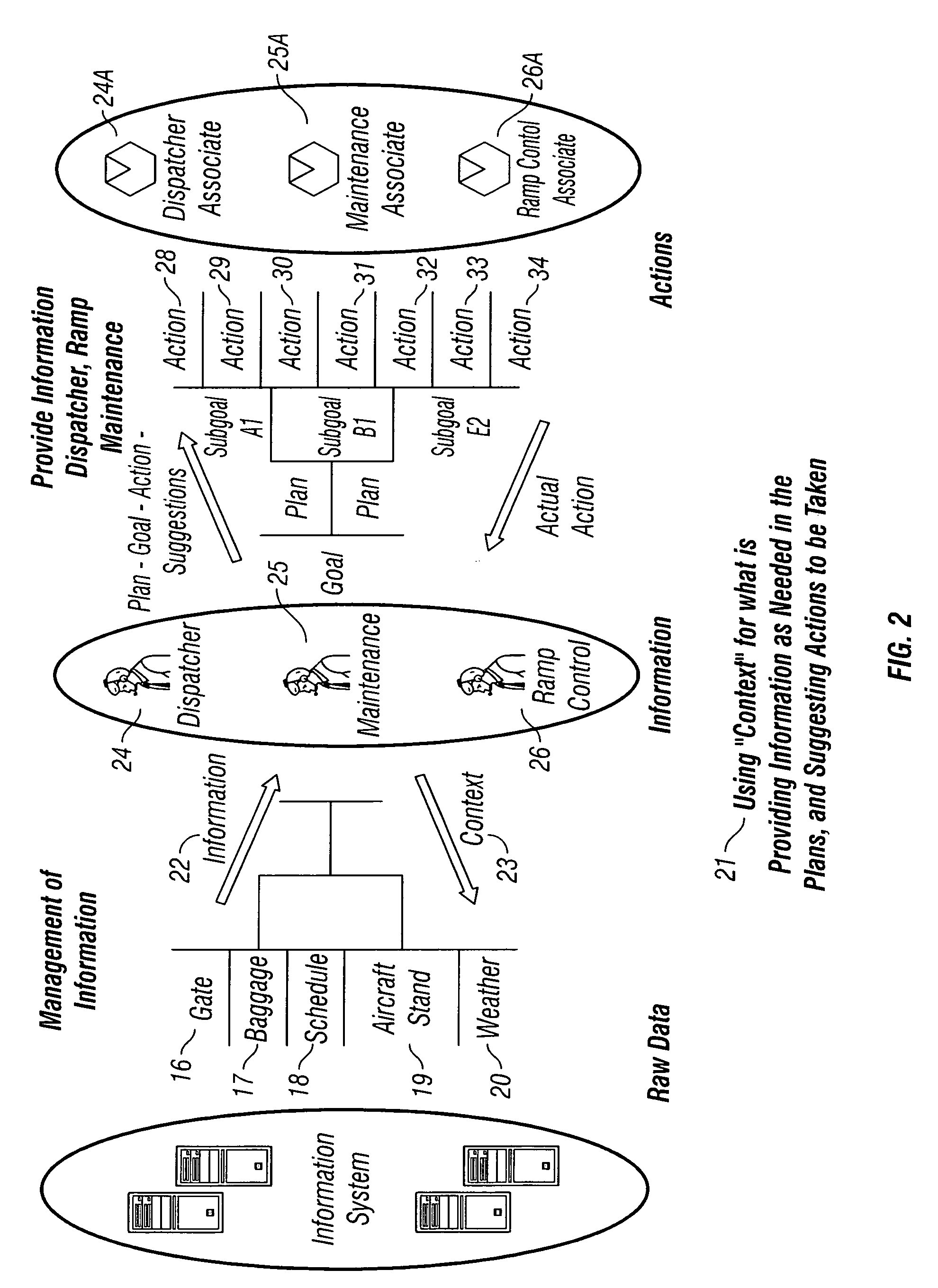Apparatus and method for an autonomous robotic system for performing activities in a well
a robotic system and autonomous technology, applied in the direction of wellbore/well accessories, instruments, surveys, etc., can solve the problems of loss of income, deterioration of permanent emplaced equipment during the operating life of the conduit, and deterioration of oil and gas conveyed, so as to achieve energy efficiency
- Summary
- Abstract
- Description
- Claims
- Application Information
AI Technical Summary
Benefits of technology
Problems solved by technology
Method used
Image
Examples
Embodiment Construction
[0061]FIG. 1: Fundamental Control and Command Loop The FIG. 1 illustrates the three basic activities of the associates, which will be located in the bottom hole assembly and at the surface of the well. These activities are Perceive 10, Decide 11, and Act 12. In perceiving the need to act, an associate can filter through vast amounts of data looking for information of importance to the user. This filtering involves the processes of detecting, combining, organizing, assessing, and monitoring the Situation 13. In helping the decision process, it can present to the user the “best” solution to this problem based on currently available information, but support the user if a different course of action is chosen. Decisions involve pattern-based recognition, diagnosing, problem solving, prediction, and goal setting and carrying out a Plan which is executed and to which the Associate commits 14. In the action part of the cycle, the associate may be authorized to perform many of the routine ta...
PUM
 Login to View More
Login to View More Abstract
Description
Claims
Application Information
 Login to View More
Login to View More - R&D
- Intellectual Property
- Life Sciences
- Materials
- Tech Scout
- Unparalleled Data Quality
- Higher Quality Content
- 60% Fewer Hallucinations
Browse by: Latest US Patents, China's latest patents, Technical Efficacy Thesaurus, Application Domain, Technology Topic, Popular Technical Reports.
© 2025 PatSnap. All rights reserved.Legal|Privacy policy|Modern Slavery Act Transparency Statement|Sitemap|About US| Contact US: help@patsnap.com



